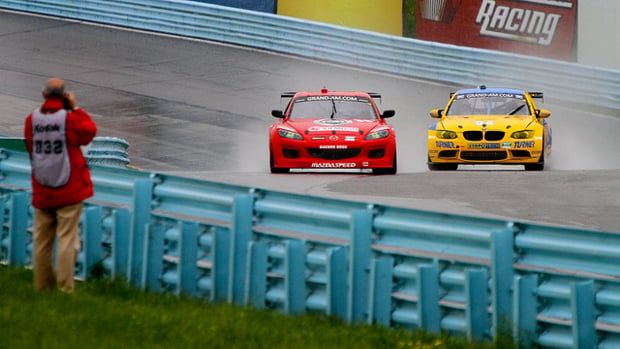Dude, Who Took My Photograph? Curating Automated Photography
![]()
A slew of new technologies are making it possible (even easy) to document everything around you without much effort or input. Wearable, automated cameras represent the most extreme end of this spectrum – devices like Autographer and the Narrative Clip record your daily life with a mind of their own.
That’s 108,000 images per hour, if you have the storage to keep them all. If you could combine that with the 360-degree video cameras being developed by CENTR, you’d really be talking about an all-seeing eye.
![]()
But maybe you don’t need to capture every micro-expressions of a potted plant. Perhaps you’d be more interested in 300-megapixel cameras that will let you read an address on the envelop in someone’s hand from a quarter-mile away, or in Gigapan systems that create multi-gigapixel composites of your subject, a level of detail that makes no difference unless you’re zooming in to scour every inch of the scene.
But even without special equipment, the latest tech lets photographers blast away all day long without much thought on conserving space or pursuing a particular vision. Professional level cameras are smaller, data is cheaper and passable cameras find their way onto not just phones — but watches, glasses and perhaps soon contacts.
There’s no reason (other than tact) that you need to let any moment of the day go un-photographed from twelve different angles.
![]()
Of course, plenty of people see that as a problem, not a modern wonder. Many, like Tim Wu over at Slate or Gevon Servo at The Phoblographer, advocate a slower type of photography.
Use a tripod more, they might say, it will force willful composition and considered shot-picking. Keep your camera on manual exposure — ALWAYS. It will force you to think harder about the light. Meanwhile, fine art photographers like Rodney Lough remain dedicated to bulky large-format film cameras as a way of pursuing a particular working mindset (particular meaning calculating and conserved) in addition to exceptional quality.
A lot of this mentality comes from photographic history, which is filled with supporters of slow. Ansel Adams famously encouraged photographers to develop the ability to “Previsualize” the photograph before taking it, or learn to imagine the image precisely before trying to capture it. To do that, you need careful composition and focusing, and perhaps an hour or two of meditation on the feel of the scene.
But even if slow works for some photographers, that doesn’t mean it’s right for everybody (or even most people). Feeling free to shoot as much and as often as possible encourages experimentation, makes for quicker learning and increases the likelihood that you’ll catch that fleeting moment of real emotion in a person’s face before they see the camera in your hands and strap on a fake smile. Not to mention the fact that it’s hard to get a decent action shot with a camera that shoots 0.01 frames per second.
Slow photography, I think, isn’t for everyone. But is automated photography a step too far?

Even a super speedy Canon EOS 1D X requires a photographer to hit the shutter button, after all, but that’s not true of automated imaging systems like the Autographer. While I’ve never gotten to play with one myself, I can see in my mind’s eye an early adopter of the technology sitting at their computer late one evening to peruse the pictures captured by their little robo-camera that day. Of the few hundred they look through, maybe they find a few unexpectedly beautiful shots. Perhaps they’ll upload the images to Flickr or Facebook; maybe they’ll even print them and hang them on their wall.
But did they actually take those photographs? I don’t think so. An automated system, based either on a timer or on some algorithm looking for the perfect scene, triggered those images, and the person wearing the camera had nothing more to do with the process than happening to place themselves in an interesting environment.
That’s not to say that there’s no artistic sensibility being applied. Instead of a photographer, I think our hypothetical Autographer-owner is more of a curator, like a photo editor pouring over randomly collected images to find the happy accidents.
It’s hard, after all, to tell a good photograph from the bad, and it’s a skill that all photographers apply when trying to pick out the keepers from a day’s shoot. If a photographer with a DSLR trained to their eye is a little like a hunter, maybe the high-tech curator is more like a fisherman, setting up their tackle ahead of time and waiting for the image to strike rather than following its tracks.

It’s not hard to imagine applying the same model to other cases too: the iPhoneographer spamming away at a snow flurry without stopping to see what they’re getting, the gigapan-maker zooming in on individual faces captured in their city-wide tableau of New York City, the Google Street View Photojournalists like Michael Wolf.
There will be, I think, only more separation between the photographer and their cameras in the future. Perhaps that’s just a sign of the times, or perhaps it’s a different sort of art entirely. Maybe one day you’ll wake up and find you spend more time picking out your favorite images taken automatically by your Google Contacts than on setting up photographs for yourself. As long as the images stay beautiful, far be it from me to say which system is better.
Image Credits: Wikimedia Commons User Brocken Inaglory